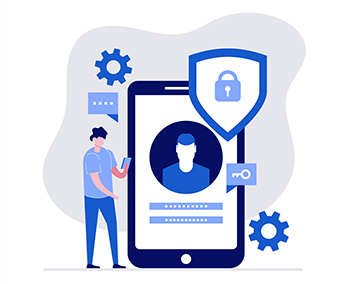
Over the years, the mobile phone has become another tool for accessing personal information, such as email, bank details, personal profiles on social networks, etc. Our use of it also means that we store personal and work information there.
Mobiles have security vulnerabilities just like computers, so you need to take steps to protect yourself. When using applications and browsing the internet from your mobile device, you must keep both usability and security in mind. You need to be protected.
Highlights
Through the mobile phone you can receive cyber-attacks that aim to obtain your data for illicit purposes, such as identity theft, theft of sensitive data and bank credentials, blocking of the phone, blackmail with financial objectives, etc. Among security incidents, you may experience:
• phishing
• smishing
• installation of viruses and spyware or malicious software
• Configure the mobile privacy options according to your personal preferences.
• Set an authentication mechanism to unlock it: PIN, pattern, password, etc.
• Use two-factor authentication and strong passwords, with numbers, letters, symbols, upper and lower case letters and a minimum of 8 characters.
• Use encrypted folders to protect your apps and private data. Consider encrypting your device's internal storage if you want to protect it completely. Also remember to encrypt external memory (such as removable SD cards), to prevent its contents from being accessed if it is lost or stolen. You can do all this from the settings of your mobile device.
• Update your software to the latest version. Among other things, the new versions fix detected vulnerabilities.
• Download apps only from trusted stores and services. Some apps may contain malware.
• When you install an app, check the permissions you give the app and ask yourself if it really needs them.
• Back up data to the trusted cloud.
• Activate remote erasure, to be used in case of theft or loss of the mobile phone.
• Watch out for open Wi-Fi networks, because they are a risk. If the connection is not encrypted, they can observe what you do or even be a malicious access point.
• Turn off Wi-Fi and Bluetooth when you don't need them.
• Install a trusted antivirus and scan your device regularly for vulnerabilities.
• Request the IMEI number by dialing *#06# to identify the device in the report, in case of loss or theft. Keep it off your device.
• Immediately block the telephone line with your operator, in case of loss or theft.




 Contact
Contact

